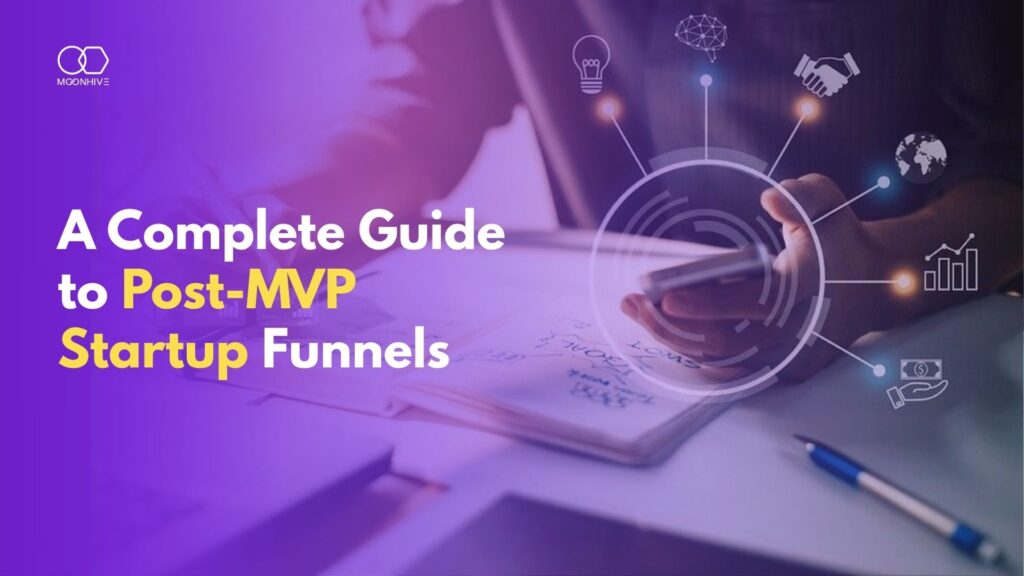So, you’ve built your MVP. You’ve validated the idea. People are signing up. Now what?
This is where many early-stage founders stall. MVP success doesn’t guarantee long-term traction. The next stage — turning early adopters into consistent revenue and scaling that growth — requires a structured funnel.
In this blog, we’ll break down the post-MVP funnel, the common pitfalls, and a step-by-step path to building one that scales — sustainably.
If you’re still working on your MVP, start with our MVP Development Checklist
Step 1: Understand Your Funnel Stages
Think of your startup funnel like a customer journey:
1. Awareness – How people find you
2. Activation – Their first experience with your product
3. Retention – Whether they stick around
4. Revenue – When and how they pay
5. Referral – If they love you enough to spread the word
These aren’t just stages — they’re levers for growth.
What works at the MVP stage might not scale unless you start optimizing each of these touchpoints.
Recommended Reading: Startup Metrics 101
Step 2: Double Down on Activation & Retentio
In the post-MVP stage, retention is more important than acquisition. Don’t pour users into a funnel that leaks.
Ask yourself:
▪️How fast are users reaching their “aha moment”?
▪️Is onboarding clear and motivating?
▪️Are they returning on Day 1, 7, or 30?
Key tactics to improve activation/retention:
▪️In-app tooltips or guided onboarding
▪️Email nudges for dormant users
▪️Feature usage analytics (see: Product Roadmap Template)
▪️Offer support (chat or quick tutorials) during the first login
Step 3: Optimize Monetization Paths
If your MVP is showing traction, it’s time to test how people will pay.
That doesn’t mean raising prices immediately. It means:
▪️Testing different pricing tiers
▪️Offering freemium → paid upgrade paths
▪️Adding value-based billing (per seat, per usage)
▪️Reducing friction in checkout and subscriptions
Tip: Use Stripe dashboards and track metrics like MRR, CAC, and LTV (explained in Startup Metrics 101).
Step 4: Build Repeatable Growth Channels
At this stage, avoid chasing 10 channels. Find 1–2 that work, and refine them.
Here’s how to identify early winners:
▪️Double down on what brings high-retention users, not just clicks
▪️Run small paid tests (LinkedIn, Google, Instagram)
▪️Leverage SEO or referral loops built into your product
Examples:
▪️Add referral incentives
▪️Repurpose feature launches as press pitches or blog posts
▪️Build content around specific keywords (like “best tool for X”)
Step 5: Scale with Systems, Not Hustle
If it feels like you’re always in firefighting mode, you need systems — not more effort.
Some things you can systemize:
▪️Weekly metric reviews
▪️Growth experiments tracker
▪️Customer feedback loops → Product decisions
▪️A simple CRM for lead nurturing and upsells
Tools like Trello, Notion, or ClickUp can handle most of this in the early days.
Recap: Post-MVP Funnel Summary
| Funnel Stage | Goal | Tools |
| Awareness | Reach ideal users | SEO, Paid Ads, Content |
| Activation | Guide to first success | Onboarding, Tooltips |
| Retention | Keep them coming back | Email, Support, UX |
| Revenue | Convert value to income | Stripe, Pricing tests |
| Referral | Build viral loops | Incentives, UX |
What’s Next?
You’ve validated your MVP. You’ve set up a basic funnel. Now it’s time to measure, iterate, and scale.
If you missed our earlier blogs, here’s a great reading order:
▪️How to Launch a Startup: A 10-Step Roadmap
▪️10 Mistakes to Avoid When Launching a Startup
Need help building a funnel that scales? Let’s talk.
